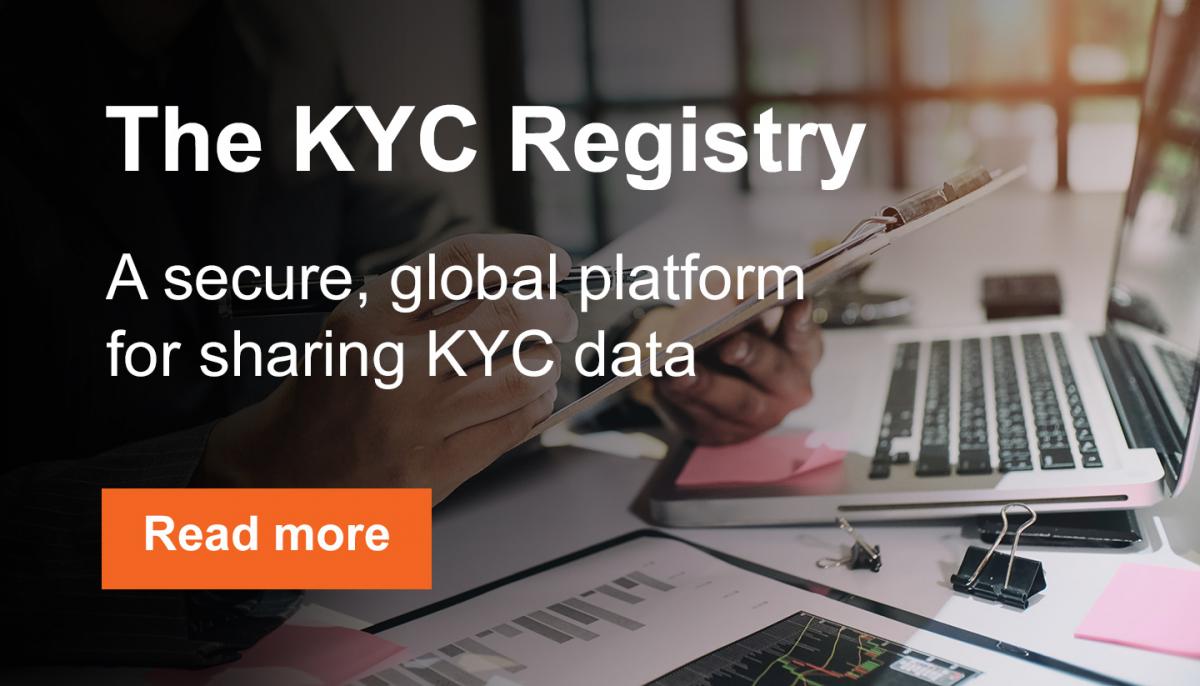Marian Owczarzy, VP Utilities Lead, KYC Industry Utilities, Alwin Bathija, Global Head of Corporates Onboarding and their teams are responsible for the implementation of global KYC processes at HSBC. For a multi-jurisdictional bank, this is no small feat. We sat down with Owczarzy and Bathija to find out how HSBC tackles this complex task using Swift’s data solutions.
Meet HSBC
HSBC Holdings plc, the parent company of HSBC, is headquartered in London. HSBC serves customers worldwide from offices in 64 countries and territories in Europe, Asia, North America, Latin America, and Middle East and North Africa. With assets of USD $2,956bn at 30 September 2020, HSBC is one of the world’s largest banking and financial services organisations.
Complying with KYC regulation on a global scale
Owczarzy and his team specialise in global Know-Your-Customer (KYC) operations for HSBC. They are responsible not only for the implementation of KYC utilities, but also for performing “reverse KYC” – addressing third-party KYC requests for HSBC data. Bathija’s team is a part of the middle office and is responsible for corporate onboarding and support. Formed in 2016, these teams are increasingly cognisant of the emergence of more challenging requests related to personal data sharing of entities’ executives and board members. With the support of the Swift KYC Registry, HSBC is able to automatically take care of standard questions while refocusing freed up time on more complex queries.
HSBC’s global presence sees the bank operating in multiple jurisdictions. To do so, the team must ensure all applicable law requirements are satisfied, a complexity that can be tricky to navigate manually. Fortunately, since 2015 HSBC has enlisted the support of Swift’s KYC Registry to automate at least some of these processes. Often faced with time pressures to deliver on deadlines for clients, the KYC Registry has helped reduce operational burden on both the bank and client side when it comes to collating data and ensuring it is up to date.
Back in 2015 when HSBC began their active use of the service, counterparties on the registry numbered in the single digits. Today they consume thousands of KYC profiles each year. “Where we can consume KYC profiles, we are able to leverage 95% of the information,” Bathija says. “With the KYC Registry we were able to complete due diligence significantly faster and often without any kind of outreach at all. So this just underscores that the use of the KYC Registry supports clients and banks, as well as how important broad adoption is.”
HSBC has also established an API (Application Programming Interface) with the KYC Registry to automatically pull information from the platform. It helps the team identify any material changes in documentation that could trigger the need to update a KYC risk profile.
HSBC is also working closely with corporates. By organising roundtables to bring their corporate clients up to speed with the solution, the bank aims to mitigate any open-ended questions they may have about the process. Many of their clients have already caught wind of the KYC Registry, resulting in increased interest. “It’s great timing to introduce the KYC Registry in order to push it to the industry,” says Owczarzy.
“Reverse KYC” with Compliance Analytics
The bank has a centralised team responsible for reverse KYC, addressing third-party requests for HSBC. In doing so, this team is faced with challenges when sourcing certain data types that are managed in different formats. For HSBC, this is where Swift Compliance Analytics comes in.
“Compliance Analytics helps our central team obtain further details of the bilateral relationship with another third-party bank,” says Owczarzy. “With this data we are either able to close the external request or we can use it as a pointer for further analysis internally if even more detailed information is required.”
HSBC uses three different Swift tools concurrently to optimise the robustness and efficiency of their process: Watch Analytics, the KYC Registry and Compliance Analytics. Watch Analytics allows HSBC to quickly validate the relationship between the requesting party and the relevant HSBC entity. The KYC Registry is a platform where the bank proactively uploads a comprehensive set of KYC or AML data on behalf of HSBC affiliate banks. Any external requests for KYC data are sent to the registry before access is granted for consumption.
Compliance Analytics takes KYC to the next level by focusing on detailed, relationship-specific queries. It offers a look into transaction flows to confirm if there is a correspondent banking relationship between parties to begin with and then provides further detail where necessary. This combined with internal input assists HSBC in answering certain questions. “Compliance Analytics works as a shortcut to information that would not otherwise be at our fingertips,” says Owczarzy. “This saves us time in responding to requests. For example, if we receive a request about a relationship where there is no such activity, we don’t need to investigate further, but can let the requestor know their question is not applicable.”
For HSBC, Owczarzy concludes, “Performing reverse KYC with Compliance Analytics helps us streamline a significant part of the process, enabling us to focus on new challenges and other industry requirements.”





